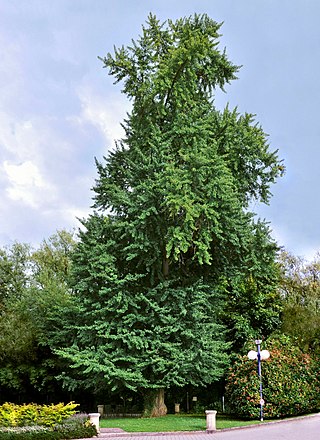
Ginkgo biloba, commonly known as ginkgo or gingko, also known as the maidenhair tree, is a species of gymnosperm tree native to East Asia. It is the last living species in the order Ginkgoales, which first appeared over 290 million years ago. Fossils very similar to the living species, belonging to the genus Ginkgo, extend back to the Middle Jurassic epoch approximately 170 million years ago. The tree was cultivated early in human history and remains commonly planted.

Ginkgoales are a gymnosperm order containing only one extant species: Ginkgo biloba, the ginkgo tree. It is monotypic, within the class Ginkgoopsida, which itself is monotypic within the division Ginkgophytaghing-KOF-it-ə. The order includes five families, of which only Ginkgoaceae remains extant.

Bilobalide is a biologically active terpenic trilactone present in Ginkgo biloba.

Ginkgolides are biologically active terpenic lactones present in Ginkgo biloba. They are diterpenoids with 20-carbon skeletons, which are biosynthesized from geranylgeranyl pyrophosphate.
In botany, a zoid or zoïd is a reproductive cell that possesses one or more flagella, and is capable of independent movement. Zoid can refer to either an asexually reproductive spore or a sexually reproductive gamete. In sexually reproductive gametes, zoids can be either male or female depending on the species. For example, some brown alga (Phaeophyceae) reproduce by producing multi-flagellated male and female gametes that recombine to form the diploid sporangia. Zoids are primarily found in some protists, diatoms, green alga, brown alga, non-vascular plants, and a few vascular plants. The most common classification group that produces zoids is the heterokonts or stramenopiles. These include green alga, brown alga, oomycetes, and some protists. The term is generally not used to describe motile, flagellated sperm found in animals. Zoid is also commonly confused for zooid which is a single organism that is part of a colonial animal.

"Gingo biloba" is a poem written by the German poet Johann Wolfgang von Goethe. The poem was published in his work West–östlicher Divan(West–Eastern Divan), first published in 1819. Goethe used "Gingo" instead of "Ginkgo" in the first version to avoid the hard sound of the letter "k".
GABA receptor antagonists are drugs that inhibit the action of GABA. In general these drugs produce stimulant and convulsant effects, and are mainly used for counteracting overdoses of sedative drugs.

Lechenaultia biloba, commonly known as blue leschenaultia, is a species of flowering plant in the family Goodeniaceae and is endemic to the south-west of Western Australia. It is a glabrous herb or subshrub with spreading branches, almost no leaves, and yellow, tube-shaped flowers.
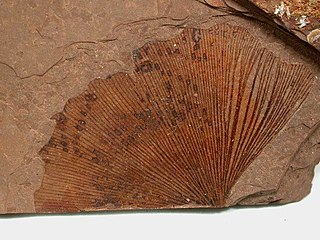
Ginkgo is a genus of non-flowering seed plants. The scientific name is also used as the English name. The order to which it belongs, Ginkgoales, first appeared in the Permian, 270 million years ago, and Ginkgo is now the only living genus within the order. The rate of evolution within the genus has been slow, and almost all its species had become extinct by the end of the Pliocene. The sole surviving species, Ginkgo biloba is only found in the wild in China, but is cultivated around the world. The relationships between ginkgos and other groups of plants are not fully resolved.
Chorizanthe biloba is a species of flowering plant in the buckwheat family known by the common name twolobe spineflower. It is endemic to California, where it is known only from the Central Coast Ranges. There are two varieties, both of which are uncommon to rare.
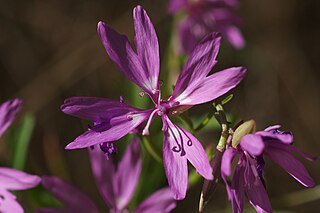
Clarkia biloba is a species of flowering plant in the evening primrose family known by the common name twolobe clarkia and two lobed clarkia.

Aerangis biloba is a species of epiphytic orchid. It is native to tropical West Africa.
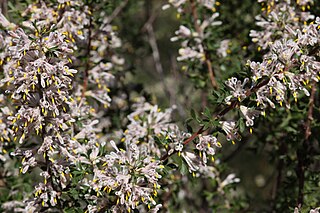
Petrophile biloba, commonly known as granite petrophile, is a species of flowering plant in the family Proteaceae and is endemic to southwestern Western Australia. It is a shrub with pinnately-divided leaves with sharply-pointed tips, and oval heads of hairy, mostly grey to pink flowers.

Ginkgotoxin (4'-O-methylpyridoxine) is a neurotoxin naturally occurring in Ginkgo biloba. It is an antivitamin structurally related to vitamin B6 (pyridoxine). It has the capacity to induce epileptic seizures.
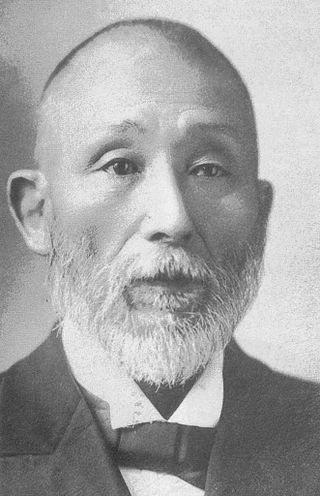
Hirase Sakugorō was a Japanese botanist and painter. Born into a samurai family in Fukui, Hirase discovered the spermatozoids of the ginkgo in January 1894, before Seiichiro Ikeno discovered the spermatozoids of the cycad. He is a laureate of the Imperial Prize of the Japan Academy (1912).

Ginkgo yimaensis is an extinct ginkgo species in the family Ginkgoaceae. It is a gymnosperm, first described by Zhou and Zhang.
Bolbia biloba is a species of moth of the family Tortricidae. It is found in Ecuador.

Pterolophia is a genus of longhorn beetles of the subfamily Lamiinae, containing the following species:
Rani Chandramani Devi Government Hospital is a children's hospital located at Pedda Waltair, Visakhapatnam, India.

Bartheletia paradoxa is a species of dimorphic fungus and is the only member of the genus Bartheletia. Bartheletia is the only genus in the family Bartheletiaceae, which is the only family in Bartheletiales, which in turn is the only order in the class Bartheletiomycetes.














